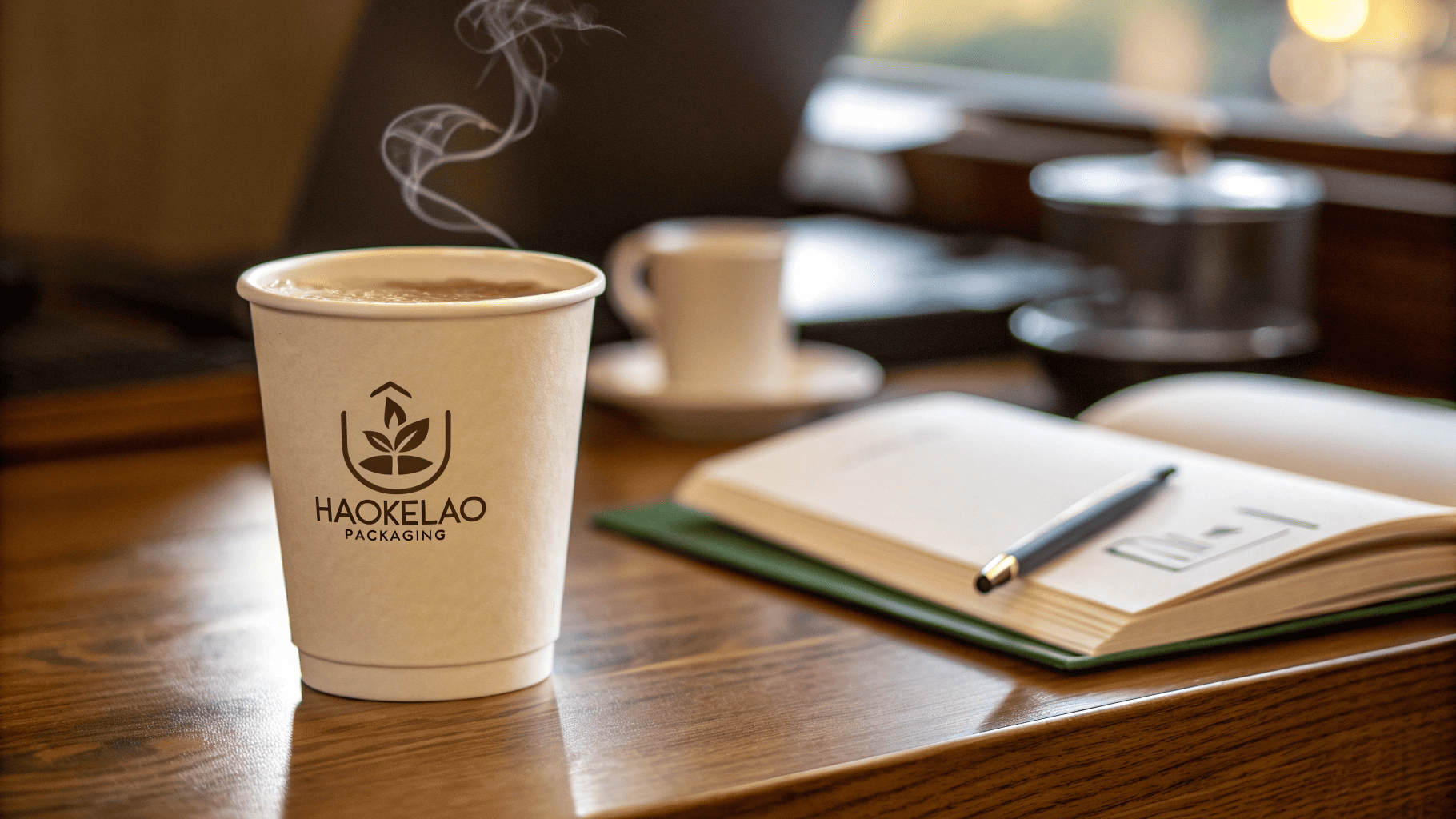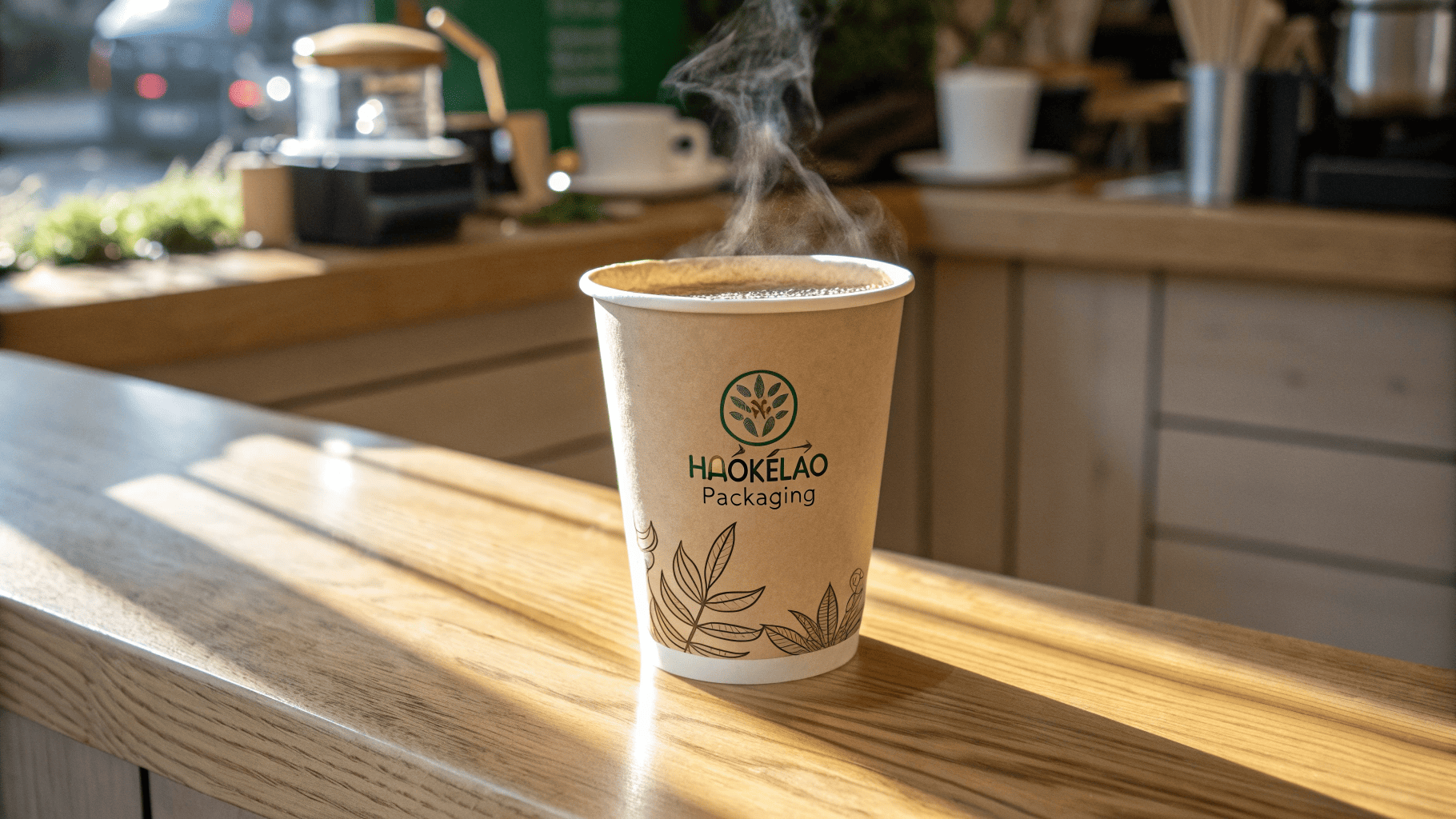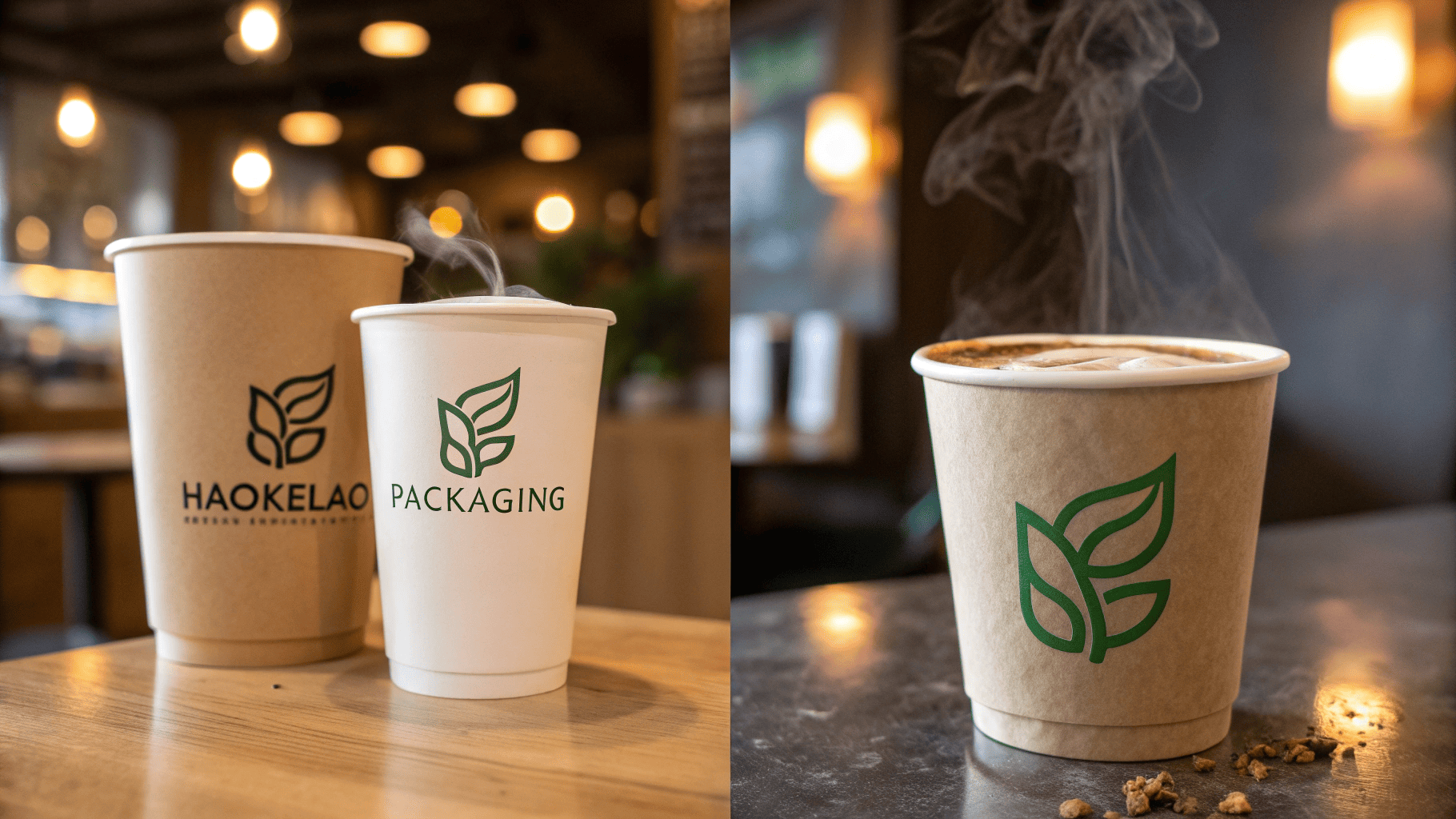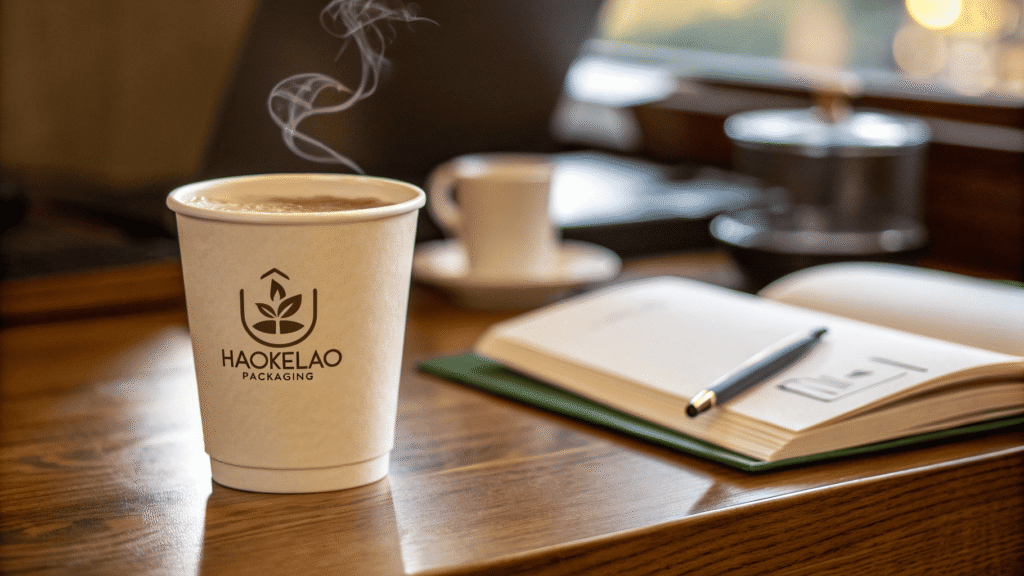You need a quick cup for tea or coffee, but you hesitate. Can this simple paper cup handle boiling water, or will it turn into a soggy, leaking mess that releases chemicals into your drink?
Yes, you can safely pour boiling water into a disposable paper cup1, but only if it's a high-quality cup with a food-grade PE2 (polyethylene) or PLA (polylactic acid) lining. These cups are specifically designed to handle heat without deforming or leaching harmful substances.

The secret to a paper cup's strength isn't the paper itself, but the invisible plastic lining on the inside. This incredibly thin layer is the only thing standing between scalding hot liquid and the paper fibers. Over my two decades in this industry, I've seen firsthand that the type and quality of this lining make all the difference. Choosing the right cup is easy once you know what to look for, but choosing the wrong one can be genuinely risky. Let's explore what makes a cup safe.
How can you tell if a paper cup is safe for hot liquids?
In an office breakroom or at a party, all paper cups tend to look the same. Using the wrong one for your hot tea is a gamble you don't even know you're taking.
A safe paper cup will be made by a reputable manufacturer3, feel sturdy in your hand, and have no chemical smell4. Look for markings that indicate it's for "food contact" and uses a PE or PLA lining5. These are built to withstand heat safely.

It’s all about quality control6. A well-made cup from a brand like Starbucks or Costa undergoes rigorous testing to meet food safety standards7 like the FDA in the US. I've tested these myself—pouring 100°C water into one and leaving it for 30 minutes. The result? No softening, no leaks, and no weird smells. It performs exactly as it should. On the other hand, the cheap, unbranded cups you find at some wholesale markets are a different story. They often feel flimsy and can start to warp or leak in minutes. To help you distinguish between a safe cup and a risky one, here’s what you need to know about the materials.
The Inner Lining: Your Guide to Safety
| Coating Type | Heat Resistance | Safety Evaluation | My Honest Assessment |
|---|---|---|---|
| PE Lining | Up to 100-110°C (212-230°F) | ✅ Safe for Hot Water. The industry standard for hot beverage cups. | This is your most reliable choice. It's cost-effective and engineered specifically to handle boiling liquids without breaking down. Almost all major coffee chain cups use this. |
| PLA Lining | Up to 85-100°C (185-212°F) | ✅ Safe for Hot Water. The eco-friendly, biodegradable alternative. | A fantastic, safe option, especially for environmentally conscious brands. While its heat tolerance is slightly lower than PE, it's more than sufficient for coffee, tea, and soup. Not ideal for holding boiling water for very long periods. |
| Wax Coating | Only 50-60°C (122-140°F) | ❌ Unsafe for Hot Water. This is for cold drinks and ice cream only. | Never use these for hot liquids. The wax will melt into your drink, which is unpleasant and potentially dangerous if it's not food-grade paraffin. This is a common and dangerous mistake. |
What are the real dangers of using the wrong paper cup?
You grab a cheap paper cup from a dusty stack, thinking you’re saving a few cents. But that "bargain" could lead to a painful burn or expose you to unwanted chemicals.
Using the wrong cup for hot water can cause the cup to soften and collapse, leading to burns. Worse, low-quality cups made from recycled paper or improper linings can release harmful chemicals, like fluorescent agents or plasticizers, directly into your drink when heated.

The risks are not just theoretical. I've seen reports and heard stories that I take very seriously. One of the most common issues is with what we call "three-no" products: no manufacturer name, no production date, and no quality certificate. These are often made from recycled paper pulp, which can contain ink residue and fluorescent whitening agents that are not safe for consumption. When hot water hits the shoddy inner lining, these contaminants can leach out. I once saw a test where water was poured into one of these cheap office cups. Within minutes, the cup was soft, leaking, and you could see tiny particles of the lining floating on the surface. That is a clear sign that you should not drink from it.
Your 4-Point Safety Checklist
To avoid these risks, here is a simple checklist I use. If a cup fails any of these points, I won't use it for hot liquids.
- Check for Markings: Look for a manufacturer's name and certifications like "For Food Contact" or a production license number (like an SC number in China). No markings means no accountability.
- Feel the Stiffness: A good hot-cup has a sturdy, rigid body and a tightly rolled rim. If it feels soft or flimsy right out of the package, it won't stand up to heat.
- Smell the Cup: A new, clean cup should have no smell. If you pick up a chemical or plasticky odor, throw it away. That's a huge red flag.
- Know its Purpose: Cups are often marked for their intended use. If it says "Cold Beverage Cup" or has a waxy feel, believe it. Never use it for anything hot.
Conclusion
You can safely use paper cups for hot water if they are high-quality PE or PLA-lined cups from a trusted source. Avoid unlabeled, flimsy, or wax-coated cups to prevent leaks and chemical exposure.
1.Explore this link to find top-rated disposable paper cups that are safe for hot beverages. ↩
2.Learn about food-grade PE and its significance in ensuring the safety of your hot drinks. ↩
3.Learn how to choose reputable manufacturers to ensure the quality and safety of your paper cups. ↩
4.Find out how to detect harmful chemical smells in paper cups to ensure your safety. ↩
5.Discover the advantages of PLA lining, especially for eco-friendly options in hot beverage cups. ↩
6.Discover why quality control is crucial in ensuring the safety and reliability of paper cups. ↩
7.Explore food safety standards to ensure the cups you use meet necessary health regulations. ↩
